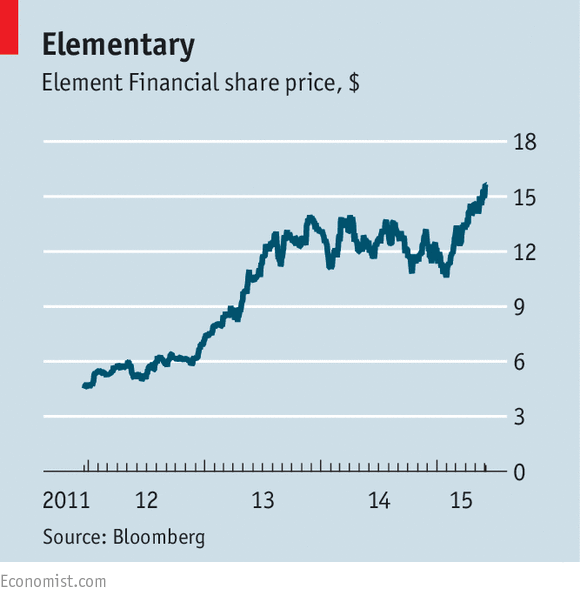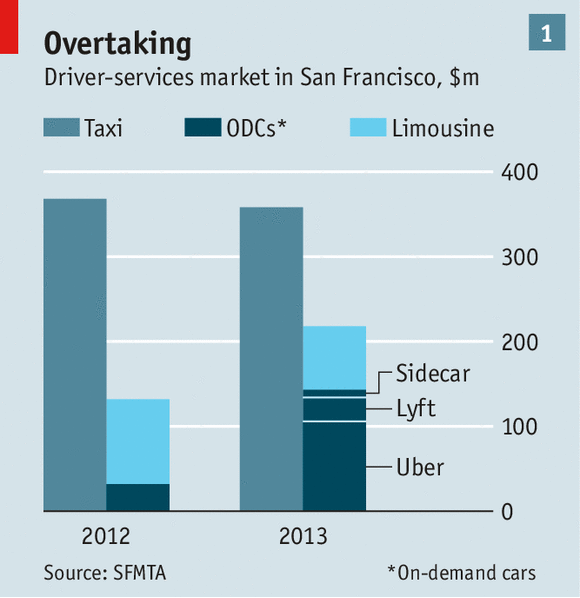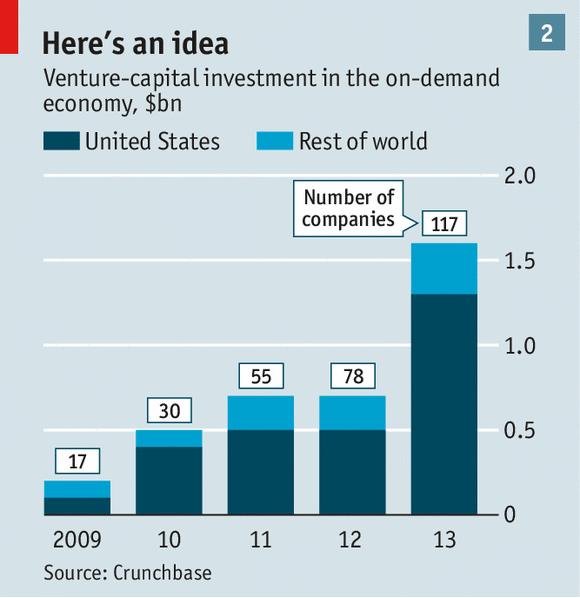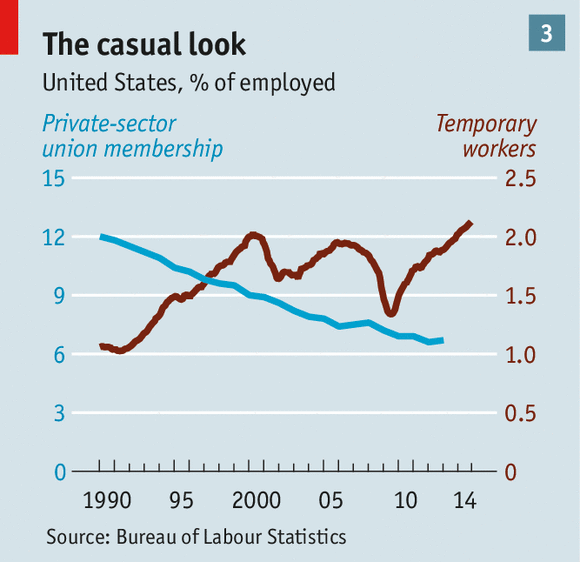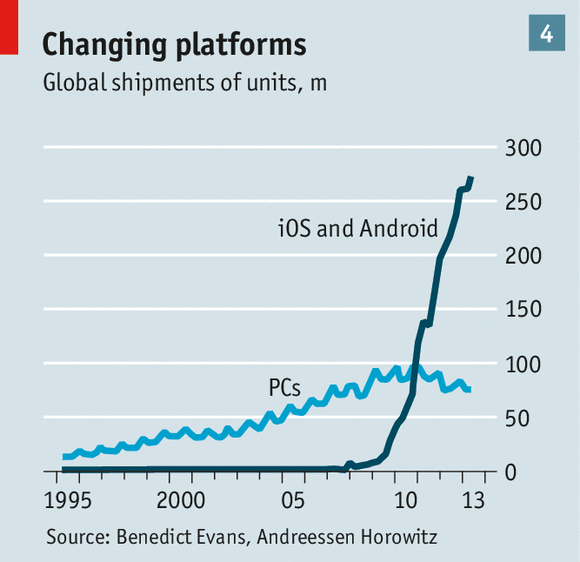So it may come as a surprise to learn that the old engine is broken. When the Fed decides that it’s time to “lift off” — perhaps this week, but more likely later this year — it will be relying on a new system, assembled from spare parts, to make interest rates rise.
There is a general agreement among economists and market analysts that the Fed’s plans make sense in theory. A team led by Simon Potter, a former academic who now heads the Fed’s market desk in New York, has been testing and fine-tuning the details by moving billions of dollars around the financial system.
But markets have a long history of scrambling the best-laid plans.
“If something is going to go wrong, I haven’t been able to figure out what, but there’s a lot of reason for caution,” said Stephen G. Cecchetti, the former chief economist at the Bank for International Settlements. “We’ve never done this before.”
The stakes are huge. The Fed is in charge of keeping economic growth on an even keel: minimal unemployment, moderate inflation. It tends to operate conservatively and to change very slowly because when it errs, the nation suffers.
Yet the Fed has found itself forced to experiment. The immense stimulus campaign that it started in response to the 2008 financial crisis changed its relationship with the financial markets. It has pumped so many dollars into the system that it cannot easily drain enough money to discourage lending, its traditional approach. Instead, the Fed plans to throw more money at the problem, paying lenders not to make loans.
The Fed, embedded in the banking system, has also concluded that working through the banks is no longer sufficient to influence the broader economy. It plans to strengthen its hold by working directly with an expanded range of lenders.
Fed officials have repeatedly expressed confidence that the plan will work. “The committee is confident that it has the tools it needs to raise short-term interest rates when it becomes appropriate to do so,” Janet L. Yellen, the Fed’s chairwoman, told Congress earlier this year, referring to its policy-making body, the Federal Open Market Committee.
And if the new approach does not work at first, Mr. Potter said in a recent speech, then his team of monetary mechanics “stands ready to innovate” until it does.
Freezing, Not Draining
The markets desk at the New York Fed has put monetary policy into practice since the mid-1930s. In the decades before the Great Recession, the desk exercised its remarkable influence over the American economy through its control of an odd little marketplace in which banks could come to borrow money for a single night.
The Fed requires banks to set aside reserves in proportion to the deposits the banks accept from customers. The reserves can be kept in cash or held in an account at the Fed. Banks that need reserves at the end of a given day can borrow from banks that have a surplus. Before the crisis, the Fed controlled the interest rate on those loans by modulating the supply of reserves: It lowered interest rates by buying Treasury securities from banks and crediting their accounts, increasing the supply of reserves; it raised rates by selling Treasuries to banks and debiting their accounts.
As the crisis hit in 2008, the Fed pressed this machine to its limits. It bought enough securities and pumped enough reserves into the banking system to drive interest rates on short-term loans to nearly zero. The federal government now pays about a dime to borrow $1,000 for one month. Companies with good credit pay about a dollar to borrow $1,000 from money market funds and other investors.
But the Fed didn’t stop there. It kept buying Treasuries and mortgage bonds to eliminate safe havens, forcing money into riskier investments that might generate economic activity. As a byproduct, the Fed kept expanding the supply of reserves.
One result is a banking system almost comically awash in money. In June 2008, banks had about $10.1 billion in their Fed accounts. The total is now $2.6 trillion. Picture all of the money in June 2008 as a single brick; the Fed has added 256 bricks of the same size. On top of that first brick, there is now a stack five stories tall.
Bank of America, for example, had $388 million in its Fed account at the end of June 2008. Seven years later, at the end of June 2015, it had $107 billion. The bank could double in size and double again and still have more reserves than it needs.
To switch metaphors, the old monetary-policy machine sits at the bottom of a lake of excess reserves. The Fed would need to sell most of the securities it has accumulated before short-term rates would start to rise. Selling quickly could roil markets; selling slowly could allow the economy to overheat. So the Fed decided to find another way.
Instead of draining all that excess money, the Fed decided to freeze it.
Paying Banks Not to Lend
For the last seven years, the Fed has encouraged financial risk-taking in the service of its campaign to increase employment and economic growth. By starting to raise interest rates, the Fed intends to gradually discourage risk-taking.
The straightforward part of the plan is persuading banks not to make loans.
In a serendipitous stroke, Congress passed a law shortly before the financial crisis that let the Fed pay interest on the reserves that banks kept at the Fed. Written as a sop to the banking industry, it has become the new linchpin of monetary policy.
Say the Fed wanted to raise short-term interest rates to 1 percent, meaning that it did not want banks to lend at lower rates. Because the glut of reserves is so great, the Fed could not easily raise rates by reducing the availability of money. Instead, the Fed plans to pre-empt the market, paying banks 1 percent interest on reserves in their Fed accounts, so banks have little reason to lend at lower rates. “Why would you lend to anyone else when you can lend to the Fed?” Kevin Logan, chief United States economist at HSBC, asked rhetorically.
This is not a cheap trick. Since the crisis, the Fed has paid banks a token annual rate of 0.25 percent on reserves. Last year alone, that cost $6.7 billion that the Fed would have otherwise handed over to the Treasury. Paying 1 percent interest would cost four times as much. The Fed has sent roughly $500 billion to the Treasury since 2008. As the Fed raises rates, some projections show that it may not transfer a single dollar in some years. Instead, the Fed will pay banks tens of billions of dollars not to use the trillions it paid them previously.
At first, Fed officials thought that paying interest to banks would establish a minimum rate for all short-term loans, exerting the same kind of broad influence as the old system. It soon became clear, however, that rates on most such loans remained lower than 0.25 percent. Even banks that needed overnight loans found they could borrow more cheaply. The average rate in July was 0.13 percent — about half of the Fed’s new benchmark rate.
The rest of the financial system is also awash in cash, and lenders — like money market mutual funds — put downward pressure on interest rates as they fight to attract borrowers.
And here’s where the Fed’s plans got a little less orthodox.
The Fed lacks the legal authority to pay these lenders a minimum interest rate on deposits, as it does to the banks. But two years ago, Lorie Logan, one of Mr. Potter’s top aides, suggested the Fed could achieve the same goal by borrowing from these companies at a minimum interest rate.
The resulting deals, known as overnight reverse repurchase agreements, signal a significant break from the Fed’s history of working through only the banking industry.
“We’re pushing more activity out of the regulated banking sector, and so monetary policy has to take account of the unregulated sector,” said Jon Faust, an economist at Johns Hopkins University who until recently served as an adviser to Ms. Yellen, and before that to her predecessor, Ben S. Bernanke. “The world is changing, and I think the bigger risk is not changing along with it.”
When liftoff arrives, however, the Fed plans to place this machinery inside the familiar language of the old system. It is likely to announce that it is raising the federal funds rate, the interest rate that banks pay to borrow reserves, from its current range of 0 to 0.25 percent to a new range of 0.25 to 0.5 percent. The Fed does not plan to emphasize that this rate is now a stage prop or that the real work of raising rates will be done outside the limelight by its new tools.
Mission Control
On weekdays at about 12:45 p.m., the New York Fed’s trading portal, known as FedTrade, plays three musical notes — F-E-D — signaling that Mr. Potter’s shop is open for business. So begins another day of training camp, another test of the Fed’s plans to borrow money from nonbank financial companies.
The Fed’s traders sit at terminals in a converted conference room. Along one wall are five chairs and five sets of computer monitors beneath five historical photographs of the trading desk: men answering phones, men writing bids in chalk on a long board and, in the most recent photograph, from the 1980s, a glimpse of a woman in the background. On another wall is a screen that links the room in New York by videoconference with a backup trading room at the Chicago Fed.
Potential lenders — a preapproved group of 168, including a bevy of money market funds and the housing finance companies Fannie Mae and Freddie Mac — have 30 minutes to offer the Fed up to $30 billion each. At 1:13 p.m., a warning message starts blinking red. At 1:15 p.m., the Fed closes the auction and accepts up to $300 billion in loans at an interest rate of 0.05 percent.
During two years of experiments, the Fed team has adjusted the rates it pays, the amounts it accepts and the time it enters the market, among other variables. Mr. Potter and his lieutenants have also held lunch meetings with investors on the other side of the portal to solicit advice and complaints.
The size of the program poses the most obvious risk. Fed officials limited daily borrowing to $300 billion because they didn’t want to freeze more money than necessary. They also worry about exacerbating market downturns by giving investors a new place to flee. These concerns were heightened by reports that some investment companies were interested in creating money market funds that would be advertised as the safest place to park money — because the money would be parked at the Fed.
Last year, at the end of September, shortly after the cap was imposed, lenders offered the Fed $407 billion on a single day. Demand was so high that instead of asking for interest, some lenders offered to pay the Fed to take the money. The Fed ended up borrowing at zero percent and turning away $107 billion in loans.
A cardinal rule of central banking is that you don’t starve financial markets during panics, and the Fed has been leaning in the direction of doing more. It has already announced that it is willing to borrow at least $200 billion through a parallel program at the end of September this year, for a total of $500 billion. It has also suggested that it may raise the cap during liftoff. “My sense is we’re better off making sure we can maintain control,” James Bullard, president of the St. Louis Fed, said in a recent interview.
Unpredictable Reactions
“This is where the nutty people on the bond-trading desks have control,” joked Alan Blinder, a former Fed vice chairman, when asked if the Fed’s plan would work.
Mr. Blinder’s point was that markets ultimately determined the cost of borrowing money, particularly for longer-term loans like mortgages and corporate bonds. The Fed can be precise in its planning, but the market is unpredictable in its reactions.
Fed officials have emphasized that they do not want the liftoff to surprise investors. “This has probably been the most telegraphed 25-point rate hike in history,” said Wayne Schmidt, chief investment officer at Gradient Investments in Arden Hills, Minn. “I think when they actually do something, it will be more of a nonevent.”
But there are at least three reasons markets are becoming less predictable.
The rise of an interconnected global financial system has weakened the Fed’s influence over interest rates. When the Fed last raised short-term rates, beginning in 2004, officials were surprised that long-term rates failed to rise because foreign money was pouring into the housing market and other domestic investments. This time, there are plenty of warnings that the weaknesses of other developed economies could once again make it harder for the Fed to raise domestic interest rates.
“Financial market conditions have come to depend increasingly not only on developments at home but also on developments abroad,” William C. Dudley, the president of the Federal Reserve Bank of New York, said in a February speech in which he cautioned the Fed’s control over those conditions had been “loosened.”
The Fed’s audience also increasingly consists of computer programs that will start buying and selling securities before people have time to read the first words of the Fed’s policy statement, creating the potential for new kinds of chaos.
On Oct. 15, for example, automated trading programs drove up the price of 10-year Treasuries in a burst of buying so intense that a government report later found the machines bought more than 10 percent of the securities from their own firms. Then, just as quickly, the computers turned around and drove prices back down.
The 12-minute spree was among the largest price movements ever seen in one of the world’s most liquid markets, yet the government report found no clear cause.
Finally, investors say regulatory changes are keeping some large traders on the sidelines, making it harder to buy and sell, even in the highly liquid market for Treasuries. That can exacerbate market movements because when people are in a hurry to buy or sell, they tend to chase the best available offers. “The depth of the market is not what it used to be,” said Tad Rivelle, chief investment officer for fixed income at TCW, a Los Angeles investment firm that manages some of the world’s largest bond funds. “You can get the same trades done, but it takes more time.”
Other observers, however, urge a broader perspective.
“People are very concerned about those 12 minutes last year,” said Mr. Cecchetti, now a professor of finance at the Brandeis International Business School. “I’m very reassured by the fact that there were only 12 minutes.”
Moreover, Mr. Cecchetti said that removing some liquidity was a good thing because much of that liquidity was a result of public subsidies for the banking system that had encouraged undue risk-taking.
“Does it mean that there’s going to be more high-frequency volatility? Sure,” he said. “It means the Simon Potters of the world are going to have to be much more careful about what they’re doing. But that seems to me to be kind of O.K.”
Volcker’s Messy Lesson
Mr. Potter has worked at the New York Fed since the late 1990s, but he spent most of his career there in the research department before taking over the markets desk in 2012. He became more involved in the practical side of the Fed’s work during the financial crisis. In a 2012 speech at New York University, Mr. Potter said the experience — particularly during a four-week period at the peak of the crisis — had impressed upon him the limits of theory, the need to understand what investors are thinking and the value of flexibility in policy making.
“For economists who did not have the opportunity to observe the panic up close as I and most of my colleagues had, the developments in this four-week period must have been bewildering, given how widely events on the ground and theory diverged,” he said.
That perspective may come in handy. The last time the Fed shifted the basic mechanics of monetary policy was in the early 1980s, when Paul Volcker was its chairman. That campaign is remembered as a triumph of central banking. Mr. Volcker succeeded in driving inflation down toward modern levels, ending a long period in which governments had floundered helplessly to prevent rising prices.
But Mr. Faust, the Johns Hopkins economist, says the messiness of Mr. Volcker’s triumph is often overlooked. The Fed’s initial plans did not work and were revised and did not work and were revised again — and still didn’t work.
He said the Volcker episode was a reminder that monetary policy is not figure skating. The Fed is likely to flail, he says, but it will be measured by its success in getting interest rates to rise, not by the grace of its performance.
“If you’re into the internal plumbing, I suspect there will be times when that looks messy because this is new,” Mr. Faust said. “But central banks can raise interest rates, and they will. And as long as that happens, from the standpoint of the broader economy, everything is fine and the rest will be forgotten or become a footnote of history.”
Source: http://www.nytimes.com/2015/09/13/business/economy/the-feds-policy-mechanics-retool-for-a-rise-in-interest-rates.htmlhttp://www.nytimes.com/2015/09/13/business/economy/the-feds-policy-mechanics-retool-for-a-rise-in-interest-rates.html
Fed risks using wrong tool to tighten
The Federal Reserve has been sending strong signals that it is preparing to raise interest rates for the first time since 2006. As the Fed prepares for lift-off, its operational framework and large balance sheet may pose challenges to market functioning.
The Fed’s balance sheet has increased from roughly $1tn at the end of 2007 to well over $4tn at present. This stems from about $3.4tn of purchases of US Treasuries and other bonds under the Fed’s quantitative easing programmes. This took such assets out of market ownership to reside on the Fed’s balance sheet.
This is important because market interest rates are effectively determined in the collateral market, such as the repo, or repurchase market, where banks and other financial institutions exchange collateral (such as US Treasuries, mortgage securities, corporate debt, equities) for money.
Financial agents that settle daily margins may post cash or collateral; this forms the core of the financial plumbing. Such “pledged” collateral is generally received by banks not only via repo markets but also from securities lending, prime brokerage agreements with hedge funds, and derivative positions. The largest suppliers of pledged collateral are hedge funds; other sources include insurers, pension funds, central banks and sovereign wealth funds.
The repo rate is an important market signal and should move in tandem with the fed funds rate; hence the need to have good plumbing.
In 2007, the collateral market was $10tn in size; now it is only $6tn. A further reduction lies ahead, threatening to rust the financial plumbing, as the Fed prepares to raise interest rates.
There are two ways the Fed can tighten monetary policy to control interest rates once it has raised them. The first is to use and expand its so-called reverse repo programme, which soaks up large sums of money from non-banks such as money market funds, but does not release collateral from the Fed’s balance sheet back into the market.
The second is to sell US Treasuries, which similarly mops up cash while also supplying collateral.
The reverse repo programme is currently capped at $300bn per day, but the Fed may raise this cap to ensure reverse repos mop up enough cash to maintain a floor on interest rates. Reverse repos work by persuading non-banks to remove dollars deposited with banks and place them with the Fed, in exchange for collateral such as Treasury bonds. So the Fed becomes the new counterparty to the non-bank, while the bank gets “balance sheet space” as the deposits move to the Fed.
Crucially, this process does not release collateral to the market as the operational structure of the reverse repo facility puts practical restrictions on the reuse of collateral. Thus, none of the collateral within the reverse repo programme can be used to post at central clearing houses, in the bilateral derivatives markets, in the bilateral repo market or delivered against short positions.
The consequence of a sizeable reverse repo programme would be that money becomes scarcer as it is drained from the market, thus raising the repo rate, while collateral becomes proportionately more abundant and therefore cheaper. Thus, by targeting the size of the programme, the repo rate can be made to track the fed funds rate; however, this will result in the repo rate not being a market rate.
A better option would be to keep the reverse repo programme size at its present level and sell US Treasuries . These bonds could be sliced and diced for repos and related collateral usage. While the Fed can control the amount sold, collateral gets reused, which is not under the Fed’s control, so the repo rate may not equate to the fed funds rate. However, selling of US Treasuries can be fine-tuned, to reduce a large wedge between two rates.
It is crucial to ensure that the market plumbing does not get rusty through the use of a large reverse repo programme. A deep and liquid collateral market provides price signals (like the repo rates) that would be weaker under a large programme.
For effective monetary policy transmission, all rates should move in sync with the fed funds rate and this requires good plumbing.
Manmohan Singh is the author of Collateral and Financial Plumbing and a senior economist at the International Monetary Fund; views are his own and not those of the IMF
Source: http://www.ft.com/intl/cms/s/0/0d72eaa8-885f-11e5-9f8c-a8d619fa707c.html
